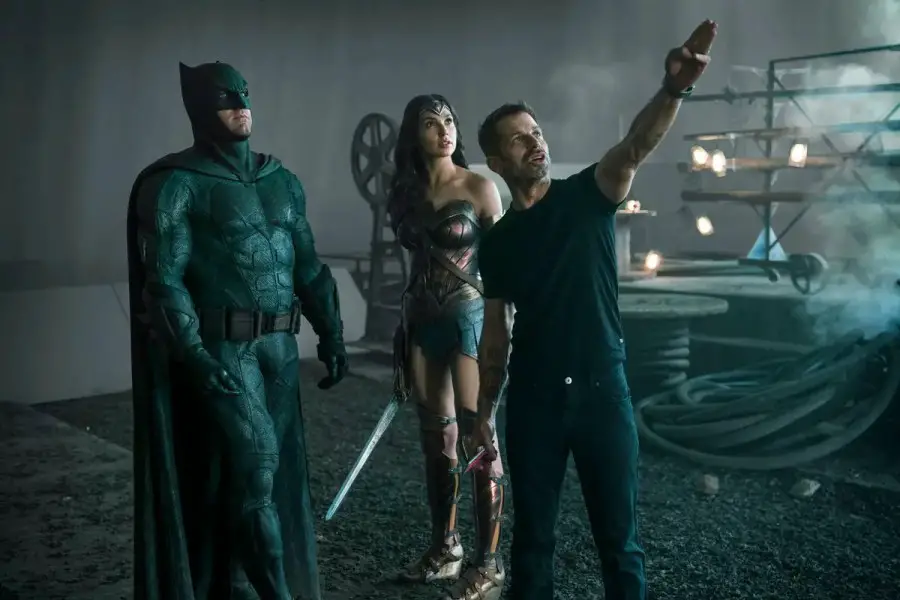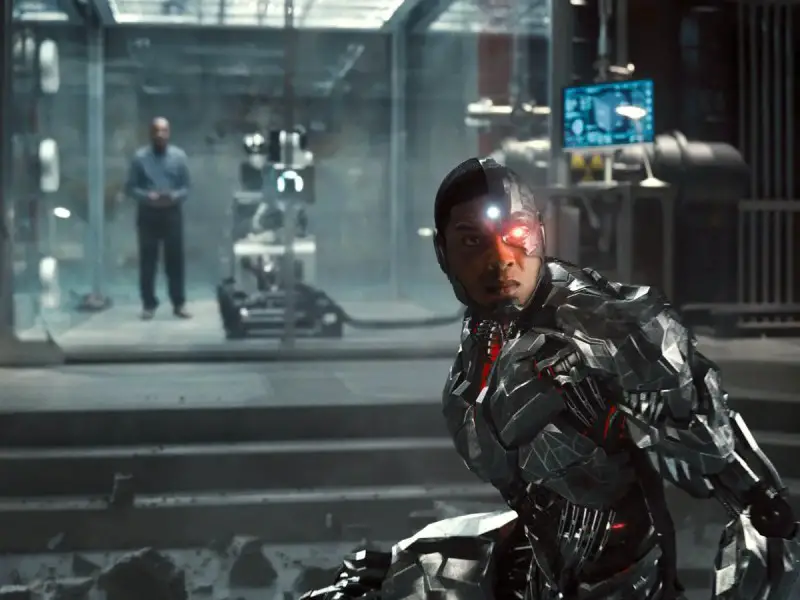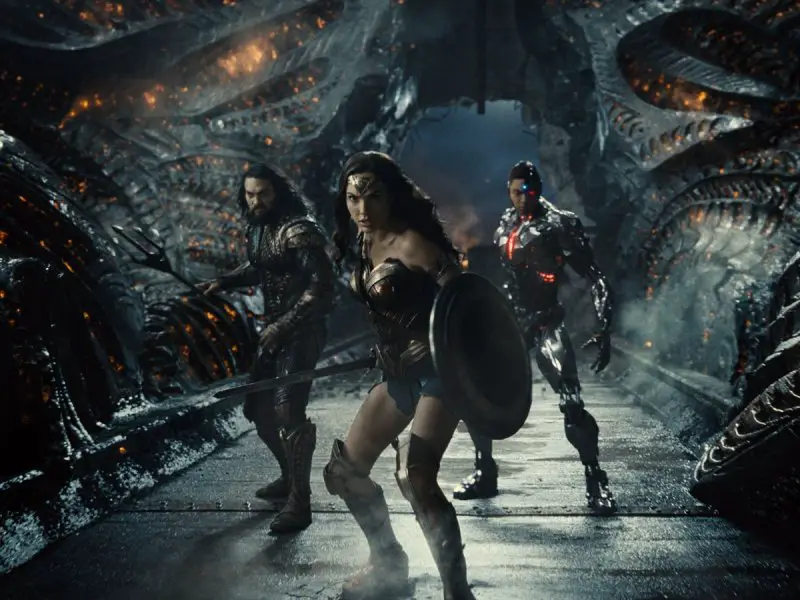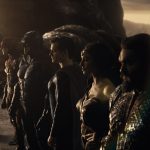‘Zack Snyder’s Justice League’ Review: “Superheroes Become The Modern Myth”

As I type the first words of this review, I’m in utter disbelief. The saga of Zack Snyder’s Justice League is a winding one, filled with heartbreak, best recounted in the excellent Vanity Fair piece “The True Story of the Snyder Cut”. Yet, it gets a happy ending. No matter what happened along the way, including some very legitimate conversation about toxicity in fanbases, Zack Snyder got to finish his epic. Running at just over four hours, there’s no question this is Snyder’s vision, through and through. It’s a behemoth of a movie. Therefore, it’s nothing less than a miracle that it turned out better than anyone could’ve hoped.
Before diving into this film, I am a fan of Mr. Snyder’s work. This past summer, I even spearheaded a series on his films entitled “Snyder Cuts”. However, I come into this film as objectively as I can possibly be. On those terms, Zack Snyder’s Justice League is a towering achievement. A complete epic packed to the gills with vision and big swings. It might also be the first film of Snyder’s to reach across the aisle, appealing to audiences everywhere.
From frame one, the intent is clear. In his dying moments, Superman (Henry Cavill) lets out a scream that reaches across the world. It’s the moment of a titan falling, making the entire world take notice. Moreover, it’s a moment that takes its languid time while the credits slowly play over. This opening montage encapsulates what the famed Snyder Cut seeks to achieve: take its time, putting character above all else.
In fact, the first half of the film focuses on set-up. That may sound like a bit of a chore, and the pacing can admittedly be glacial, but the story that Snyder and screenwriter Chris Terrio tell is one worth hearing out. It’s all in character. Ben Affleck has never been better as Bruce Wayne/Batman, the former fear monger of Gotham who now is trying to do right by Superman by uniting the best of mankind in preparation for an outside threat. Doing so proves a difficult challenge.
READ: Snyder Cuts: ‘Man of Steel’ : “A Superman For The Times”
The main theme of Zack Snyder’s Justice League is finding unity despite the issues we all face. The film takes on a certain Seven Samurai-esque quality as Bruce visits various locales recruiting the best of the best. It helps that the film is shot in glorious 4:3, specially formatted for IMAX screens. Cinematographer Fabian Wagner’s awe-inspiring work here sets the scene for the worlds of each of the would-be heroes. Time is given for everything to play out, the scene is set, and within that, we get to know these characters intimately.
Diana Prince/Wonder Woman (Gal Gadot) is learning how to step out into the light and be the warrior the people need. Brazen Arthur Curry/Aquaman (Jason Momoa) struggles with resentment toward the Atlantean people, refusing to acknowledge that part of himself. Barry Allen/The Flash (Ezra Miller), though endearingly awkward, is haunted by the murder of his mother and his father’s wrongful conviction for the act. Character work has never been Snyder’s strongest suit, as he’s usually more concerned with wider themes. But, by finally willing to explore what makes his characters tick, he reverses his usual trend and uses the themes in service of the characters rather than the other way around. He and Terrio shed the grimdark cynicism of the (still great) Batman v. Superman: Dawn of Justice in favor of heartfelt introspection.
At the core of this is Ray Fisher’s Victor Stone/Cyborg. Fisher’s situation with Warner Bros. is a heartbreaking case of Hollywood discrimination that is still playing out in real-time. His performance in this film provides a relieving sense of catharsis as we get to see just what this man can do. He plays Stone, a man whose life was ripped away from him, who feels abandoned by his father, and now has been turned into something more than human. His story is one of navigating change, learning to be a part of a new world, and finding his courage to accept that. He is the embodiment of unity, between the technological and human world, and to a large extent to the digital and alien worlds. As such, he is the film’s best character; a challenging, hard to swallow, beating heart to center the film around.
Even the film’s villain, Steppenwolf (Ciaran Hinds) gets an uncommon amount of development. He is the antithesis of the unity the other characters slowly develop. He’s a petulant, power-hungry coward, who wants to unite the three alien “mother boxes” for the purpose of creating destruction and pleasing his master, alien tyrant Darkseid (Ray Porter), who has cast him out. The CGI work on his character rivals that of Thanos in Avengers: Infinity War. He’s a complex antagonist whose goals, fears, desires are just as interesting as the leads.
READ: Snyder Cuts: ‘Sucker Punch’ Is Like Nothing Else
The first two hours of the film lavishly make sure you know where everyone is coming from. That’s not to say it lacks the bombastic action you come to expect in these movies. An early scene where Wonder Woman thwarts domestic terrorism is as slickly choreographed as something you’d see in Sucker Punch. The rough-and-tumble invasion of Themyscira rivets as a high stakes relay, while a flashback detailing the lore of the mother boxes recalls the prologue of Lord of the Rings. And the first time the League unites and starts kicking ass, it’s a treat. Seeing these characters come together, navigating their differences, results in a down-and-dirty adrenaline extravaganza that leads us directly into the second half of the film.
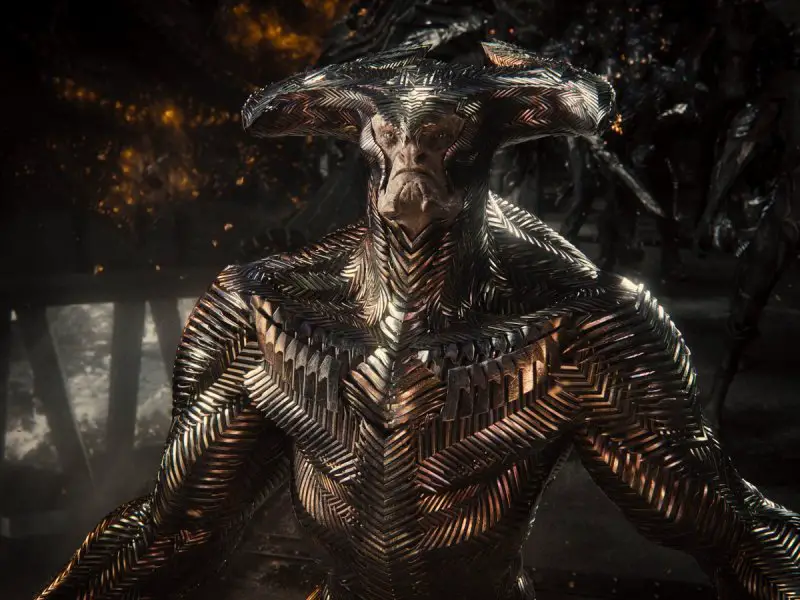
Once all the pieces are in place, Zack Snyder’s Justice League moves with propulsive energy. Part of this is the score from Tom Holkenborg, aka Junkie XL. Holkenborg weaves together themes from the previous DC Extended Universe films while also adding some new themes on top of them. These themes are all-timers, crackling with delicious guitar riffs and larger-than-life orchestration. It’s a microcosm of what Zack Snyder’s Justice League does well. All of the disparate threads of the DCEU come together into a cohesive whole.
It’s a wonderful spearhead to Snyder’s vision. The Superman arc in particular stands out. Without going into details, the trajectory for his character is clarified. We finally reach the Superman we all know and love, and it’s perfect. The resurrection of Superman leads into the third act of the film, which is easily its crown jewel.
READ: Snyder Cuts: ‘Batman v Superman: Dawn of Justice’ Sharply Divides Two Critics
Stakes are high. We understand where everybody is coming from, and it’s time to face the threat. Zack Snyder gives his best action yet, and perhaps the best superhero action ever put on screen. It flies in the face of gratuity, instead of focusing on the team dynamics. Fights center around moment-to-moment tactics. How the League works together is paramount to the scenes. The intricacy of the final set-piece is risky, but it pays off tenfold. For all of its artistic merit, there’s no beating the “holy cow” moments of seeing your favorite heroes doing things you never thought you’ve seen on screen. The R Rating also allows Snyder to use the violence for genuine catharsis, with the heroes literally cutting down evil.
Once the battle concludes, the film seemingly ends on a triumphant note. Heroes from different worlds have overcome their differences, defeated the threat, and found their belief that the world deserves to be protected. It’s beautiful, and I’d be lying if I said it didn’t leave me teary-eyed. Then, an epilogue follows that gives closure to these characters before doing some teasing of what Snyder had in mind for the future. Of course, it’s glorious.
Where Snyder’s interpretation of the DCEU goes from here is up in the air. But if this is to be the last hurrah, then it’s a damn perfect one to go out on. Zack Snyder’s Justice League is a huge win. Not for the toxic parts of the fanbase that harass others. But for those who love his unique vision of superheroes. For Zack Snyder himself. For the cast and the crew who finally get to see their work come to life. And, mostly, it’s a win for mainstream art.
Zack Snyder’s Justice League is a film that should appeal to everybody, and with time could be seen as the very best the genre has to offer. After all, Zack Snyder’s Justice League has so much to say about humanity and the individual struggles we all face, accentuated by epic grandiosity, that it becomes the first film to truly prove the notion of superheroes as modern myths. – James Preston Poole
Rating: 10/10
Zack Snyder’s Justice League will be available to stream on HBO Max on March 18th.
This review is dedicated to the memory of Autumn Snyder. Please consider donating to the American Foundation for Suicide Foundation. Their website, as well as a variety of mental health resources, can be found here.

